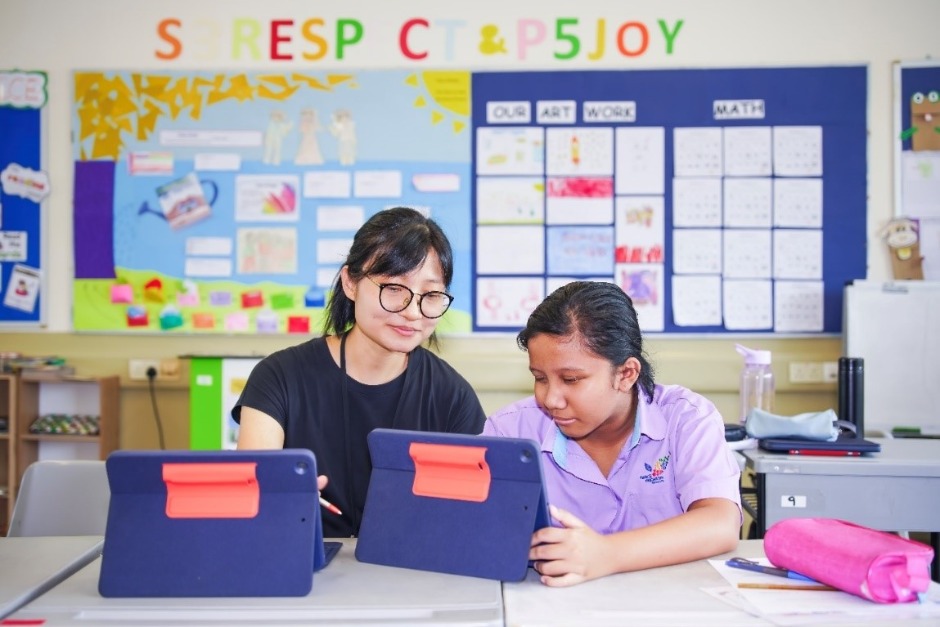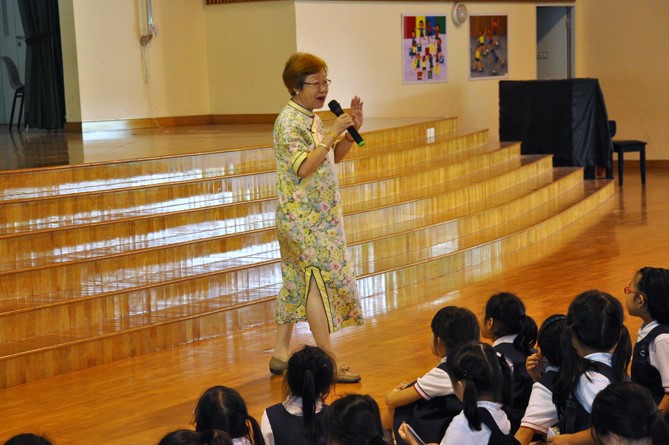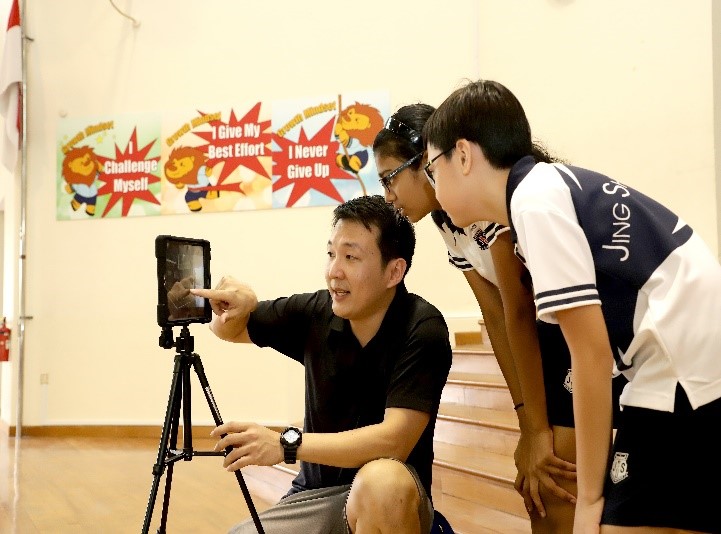Penny Chong Chew Luan, Ahmad Ibrahim Secondary School, President’s Award for Teachers 2021 Finalist
It is a sea of change for most visually impaired (VI) students when they enter Ahmad Ibrahim Secondary School, after spending their early years in a special school.
For starters, they need to navigate far bigger premises, and learn alongside sighted students, many of whom are making friends with persons with disabilities for the first time.
Within a year or two, however, the differences between them are smoothed when those same students could be attending camps, performing for the public, and serving the community together.
The woman at the centre of these integration efforts is Penny Chong, who is herself visually impaired and an alumnus of the school.
Navigating the way ahead
Penny lost her sight at nine years old after her optic nerves were damaged due to a medical condition, which led her to enrol in a school for the visually impaired.
When she joined Ahmad Ibrahim Secondary School in the 1990s, she had to adjust from being in a class of three to a class of 40. There were hurdles too when it came to learning materials that had not been adapted for the visually impaired.
She recalls how there was a literature guide that she and her classmates needed that was not available in Braille. Along came her teacher, Deborah Ng, who was also visually impaired, who took it upon herself to create the Braille version.
“What touched me most was, being totally blind herself, she couldn’t read print books,” said Penny. “Yet, she manually built the Braille version, word for word.”
Ms Ng’s dedication left a huge impression on her. Coupled with her own challenges, it fuelled her desire to help students like herself to cope – then push boundaries – in a sighted world.
In the last 13 years of her teaching career, the National University of Singapore history major has been a dedicated resource teacher for all subjects that her VI charges undertake.
This may involve converting academic materials into Braille, developing additional material, or adhoc projects like learning an online tool for music composition in order to assist a student how to use it for his music examination at O-level.
She checks in with the VI students every school day (there are six of them currently enrolled), aiding and encouraging them on their journey to be independent learners, which will serve them well when they move on to higher education.
Challenging VI students to dream the impossible
At the heart of it, Penny wants to challenge VI students to stretch themselves and take on tasks they did not think were possible. This in turn will build their resilience, confidence and adaptability to the world around them.
Such is her resolve that this year, her 16-year-old student Toh Bo Sheng, who is partially sighted, became the first VI student in Ahmad Ibrahim to take the N-Level examinations for Chinese Language.
This is no mean feat on several counts.
Firstly, Chinese Language, unlike languages based on the English alphabet, does not translate naturally in Braille, and this increases the difficulty of learning the language exponentially. VI students are thus exempted from subjects such as Chinese Language and Tamil Language and offered a mother tongue language such as Malay Language in Braille.
Secondly, Bo Sheng had never learned Chinese Language in school. In Secondary 1, he took Malay Language, but his grades were weak. When Penny realised that he speaks Mandarin fluently, thanks to his love for Mandarin documentaries, she recommended that he switch to Chinese Language in Secondary 2.
To help him and other VI students taking up Chinese Language, it helps that Penny is a huge fan of technology.
She uses a computer with a screen reader to train the students to listen to and type in Chinese, in addition to other assistive devices such as a Braille note-taker (it works like an electronic Braille book where students can upload soft copy books and read rows of pins that move up and down, reflecting the words on the screen).
“Technology is really crucial,” she reiterated. “If a VI person does not have that, it’s very difficult to survive in society today.”
However, for subjects such as Maths, Penny prefers to use tried and tested tactile methods where students feel shapes such as pyramids or cubes, to help students visualise and grasp mathematical concepts. Meanwhile, she teaches topics like graphs by using strawboards. VI students place a Braille graph paper on the strawboard and use pins to plot graphs.
Standing tall in a world of the sighted
While working on her students’ academic progress, Penny is also conscious about promoting inclusion in and outside of school. She creates opportunities for VI students to interact with sighted students and getting them involved in activities externally, where they work with mentors to pursue their interests or showcase their talents.
For example, in 2016, she worked with creative producer Alecia Neo on Unseen Constellations, a project where VI people worked with the sighted, to stage skits and other productions for the public. One of her students, John Danesh, created a play based on crime. At the time, John was unused to moving around independently, and the event nudged him to further his interests and sidle outside of his comfort zone.
Because of his interest in criminal psychology, he eventually connected with two mentors, one a blind counsellor who works in the prison, and a police officer. Fast forward to today, and John is studying a subject he loves in a university in Tasmania, Australia, and hopes to be a lawyer one day.
VI people pay it forward too
Staying true to her belief that VI people are givers as well, Penny has also been encouraging her students to do their part for the community. In 2019, she co-organised a two-day camp with members of NUS’ College of Alice and Peter Tan, where five VI students and four sighted Ahmad Ibrahim students bonded over games and sharing sessions before paying a community visit to seniors at St Luke’s ElderCare.
In the same year, her students participated in a community project at Tasek Jurong, a charity that helps disadvantaged youths and ex-inmates.
Such engagements benefit all parties, she said. “Building awareness is actually very broad. It’s not just about the public understanding of VI people; VI people must also do their part.”
Yet, Penny acknowledges that while awareness about the visually impaired has improved over the years, understanding about their capabilities is still lacking. She cites a general reluctance of employers to hire VI people if they didn’t check off on lists with all the standard competencies, without considering, for example, how some tasks could be modified or replaced to allow for the visually impaired to also get the job done.
Seeing her students move on to higher education motivates her to support them even after they graduate. She works with Special Education Needs officers of ITE Central and ITE East and, polytechnics and universities to share information on teaching tools that help VI students, such as Braille printers that print material in tactile form.
Looking at the challenges that Penny helps her students to overcome, one wonders how she managed as a student 20 to 30 years ago at a time when the world had fewer resources for persons with needs. She shares how her family, comprising her father, mother and sister, would read books and her classmates’ study notes to her after school while she took notes down in Braille. “I have a very supportive family…I consider myself very blessed.”






